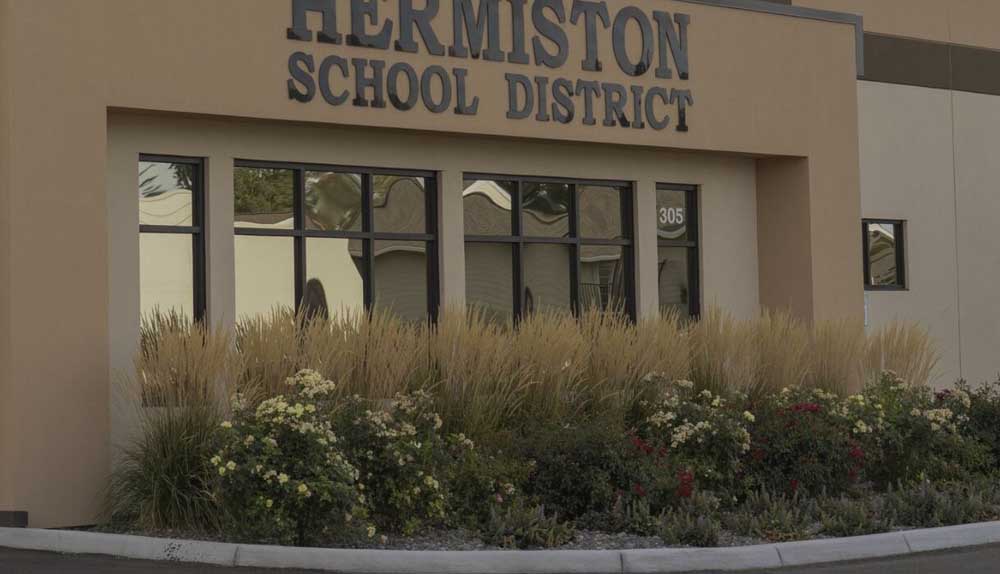Where’s a good place to go birdwatching in Oregon?
Published 10:00 am Friday, April 25, 2025
On an average night in Multnomah County, about 60,000 birds fly over the state, making their way to nests and breeding grounds.
On Wednesday, that number jumped to 700,000.
All told, millions of birds will migrate through the state between April and late May, heading north to breeding grounds in Canada as part of the annual spring migration season, according to the Bird Alliance of Oregon, a nonprofit that works to protect native birds and their habitats across the state.
“Birds are really moving through the state right now,” said Brodie Cass Talbott, a birdwatcher and statewide engagement manager with Bird Alliance of Oregon. “Right now is a great time to go birding, we’re hitting peak migration.”
Peak migration season began this week, and if you’ve ever thought about getting into birdwatching, Oregon is the perfect place to start, Cass Talbott said.
“Oregon is a really remarkable place for birding,” he said. With a diverse range of habitats, climate and geography, birds of every shape and size, from pelicans and puffins to sage grouse and starlings call the Beaver State home
“You have this incredible ability to see some really amazing birds,” Cass Talbott said. “It’s all about getting out to different habitats.”
Northwest Oregon
No birdwatching trip to the Oregon Coast can be complete without a trip to Cannon Beach, Cass Talbott said. Haystack Rock is one of the few places in the continental U.S. where you can see tufted puffins from shore.
“Haystack Rock is obviously well known as a tourist destination, but for birders it’s also really incredible,” Cass Talbott said. “It’s essentially an island visible from shore.”
Haystack is home to nesting sea birds, such as puffins, murres and harlequin ducks. Bald eagles are also a common sight, as well as shore birds such as sandpipers and plovers.
“Get there early in the morning, before the crowds show up,” Cass Talbott advised.
A short drive north you’ll find Seaside Cove. A popular site for surfers, the area is also home to black turnstones and the threatened snowy plover, a bird once driven to near extinction, which has made a remarkable comeback through conservation efforts, Cass Talbott said.
What to look for: “People fly into Oregon to go to Cannon Beach, because it’s the only place in the entire lower 48 states that you’re able to see tufted puffins from shore,” Cass Talbott said.
Northeast Oregon
The grasslands of Wallowa County, on Oregon’s far eastern border, make for a unique experience for Oregon birdwatchers.
“You have completely different bird life in these places,” Cass Talbott said. “It’s pretty amazing. They have these wetlands and incredible habitat diversity, like the Snake River or up into the Eagle Caps into the Wallowa Mountains. There’s completely different bird life up there.”
The annual Ladd Marsh Bird Festival in La Grande in May is a great way to experience the birds of Northeastern Oregon.
Statesman of the plains: Burrowing owls and loggerhead shrikes are good birds to keep an eye out for in Wallowa County, Cass Talbott said. But if you get really lucky, you might spy a greater sage grouse, a large pheasant-like bird known for its distincting look and mating call.
Central Oregon
With its high deserts and lava beds, Central Oregon has lots to offer, but a secret jewel can be found in and around Sisters, home to more species of woodpeckers than anywhere else in Oregon.
All told, 11 of the state’s 12 woodpecker species can be found there, the highest diversity of woodpeckers anywhere in the country, including. Included some rarer sights, such as the white-headed and three-toed woodpeckers.
“Sisters is fantastic,” Wendy Andrick, president of the East Cascade Bird Alliance. “I was there the last three days. There’s some great woodpecker activity there, now.”
Camp Sherman or Camp Polk Meadow Preserve are good spots to stop if you’re on the hunt for woodpeckers, but Central Oregon has other great options, including the Crooked River Wetlands Complex in Prineville, which is home to migrating waterfowl, as well as raptors, swallows and songbirds. In Bend, Hatfield Lake and the Old Mill area are also easily accessible spots, with nuthatches, ravens, songbirds, raptors, water fowl and lots more.
Plan an excursion: East Cascade Bird Alliance has several events for bird lovers this spring and summer, including bird walks and the Dean Hale Woodpecker Weekend.
Southern Oregon
The Medford area is home to the confluence of the Cascade and Siskiyou mountains, bringing with it an interesting mix of unique habitats for bird watchers to check out.
“People bird there to see specific birds you can’t find anywhere else,” Cass Talbott said.
The California towhee and oak titmouse are both unusual finds in other parts of Oregon, but most birders are there to see one particular nocturnal flyer.
Medford and Southern Oregon are well-known among birders for populations of great gray owl.
Why birders love owls: “The great gray owl is the most charismatic and sought-after bird you’ll see,” Cass Talbott said. “Hardcore birders definitely want to have a great gray owl on their life list.”
Southeast Oregon
For most birdwatchers in Oregon, there’s one must-see destination: Harney County.
Home to the annual Migratory Bird Festival, the Malheur National Wildlife Refuge is the top place in the state for birdwatching.
“They see huge numbers of waterfowl and shorebirds, and these great raptors and burrowing owls,” Cass Talbott said. “It’s not a hidden jewel, but it’s great.”
Set your calendars for next year: Widespread flooding the area led to the cancellation of this year’s Migratory Bird Festival.
Willamette Valley
Even urban areas are great places to go birdwatching, Cass Talbott said.
Several free refuges and natural areas, such as Oaks Bottom Wildlife Refuge, Powell Butte Nature Park or Forest Park in Portland, are stellar places to get into nature and see birds, many of which are on public transportation lines.
One spot worth checking: Bird Alliance of Oregon operates a wildlife sanctuary in Portland, which is home to owls, jays, wrens and other native birds.
Your backyard
But the truly great thing about birdwatching, Cass Talbott said, is that you don’t need to spend a lot of money or travel to the four corners of Oregon to see some incredible sights.
“The best place for me to see birds is my own backyard,” Cass Talbott said. “Or I’ll head down to my local neighborhood park, it doesn’t have to be anything special. Birds are just about everywhere. You might be surprised to see that you have 30 different species of birds in your yard.”
Looking to get into the hobby? Download a free birdwatching app, which can help identify the birds you see, Cass Talbott said.





